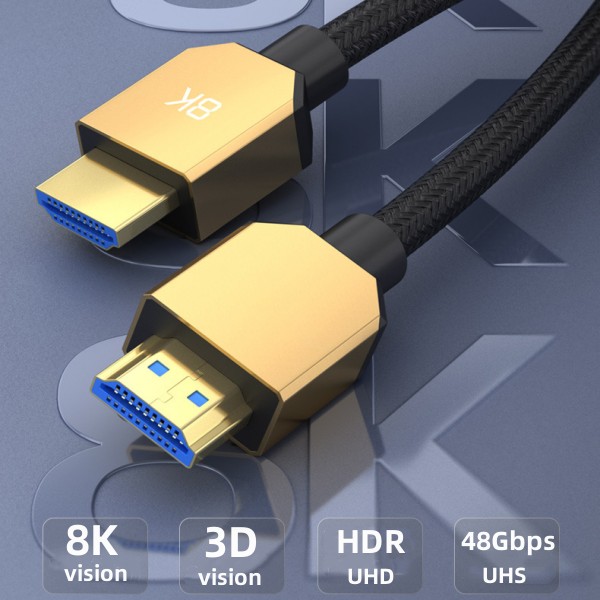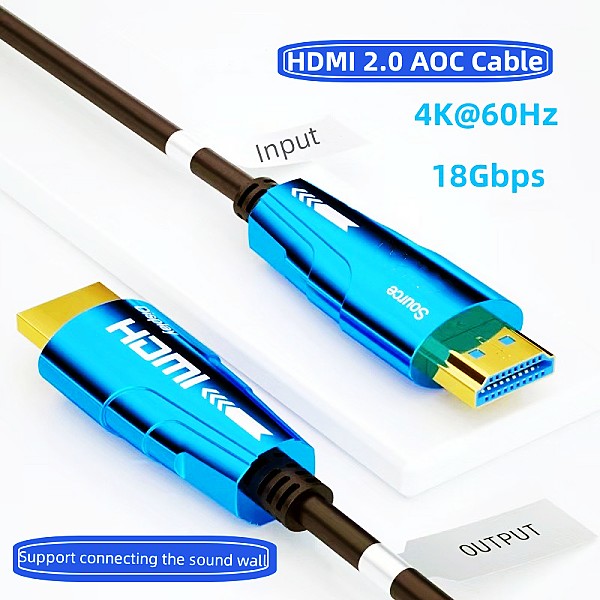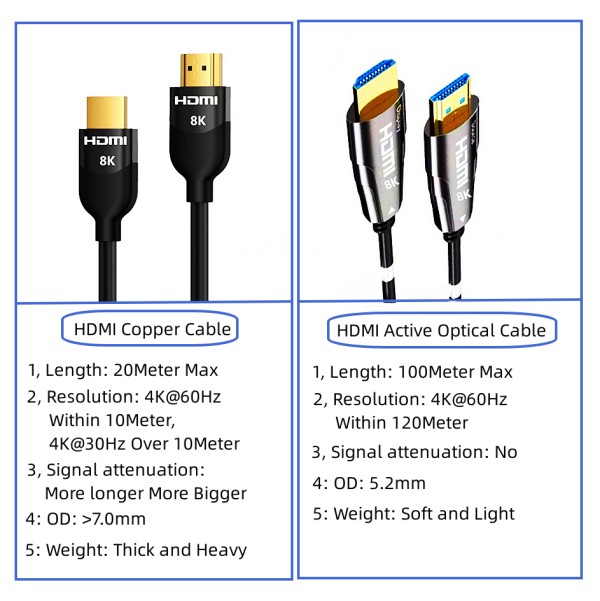
Standard HDMI Cable Lengths
Before taking a look at how HDMI cable lengths can affect its performance and other related factors, let’s learn more about the standard HDMI cable lengths. These are essentially the HDMI cable lengths that you will generally find in the market without needing any kind of adapters or extenders. The most common HDMI cable length options that you will find out there include 3 feet, 6 feet, 10 feet, and 25 feet. And if you want any longer lengths than these, then you will need to use their combination along with HDMI extension methods.

How do I Extend my HDMI Cable?
As mentioned earlier, you can combine multiple HDMI cables together to extend them on a longer distance if needed. For the same, you can find multiple methods that you can consider using at your home. While some of them are quite affordable, others rely on HDMI extenders which may be a bit expensive as shown here:
Wireless HDMI Transmitters: In many cases, you would want to connect two HDMI devices that are far away without needing to use any cables for the same. For the same, you can consider using a wireless HDMI transmitter. Just per the name, these devicMaximum Length for Passive HDMI Cable
Now that you know the various viable methods for extending your HDMI cables, you may even be wondering about why you would want to do the same. This is due to the reason that HDMI cables have a maximum length, after which there can be various issues with the image quality. And starting with passive HDMI cables, they have quite a short range. In most cases, a passive HDMI cable will only offer up to 25 feet of maximum length. In some cases, premium HDMI cables might be able to offer slightly higher lengths, but even they get limited to 40 to 50 feet of maximum length.
Maximum Length for Active Optical HDMI Cables
While the maximum cable length of a passive HDMI cable can be quite limited, you can still find HDMI cables that are much longer. This is possible thanks to the active optical HDMI cables which combine optical fiber with an HDMI cable. These cables have an optical fiber cable along with an active controller or processor for transmitting the HDMI signals over an optical fiber. Due to this, you can easily find long active optical HDMI cables of length like 100 feet, 200 feet, and even longer which should be good enough for most users.

What Resolutions can HDMI Cables Handle?
Other than the maximum supported length for HDMI cables, some of you might also be interested in checking the performance of HDMI in terms of the maximum resolution that it can support. This primarily depends on the HDMI version that you are currently using where both HDMI ports as well as your HDMI cable need to have the same HDMI version. While there are various HDMI versions available out there, here are some of the common ones and their maximum resolutions:
Does the Length of HDMI Cables Affect Image Quality?
As stated earlier, all HDMI cables have a maximum length that they can properly work at, and buying cables longer than that is not advised. This is due to the reason that longer HDMI cables can certainly cause image artifacts. Thankfully, if you are using standard lengths like 10 feet, 15 feet, or even 25 feet, this will not be an issue at all. However, once you go beyond that, you may experience artifacts, broken signal, chroma subsampling, lower text sharpness, and other issues with your image.
Do Long HDMI Cables Cause Lag?
If you are going with HDMI cables longer than the standard lengths discussed earlier, you may even face lag issues. While there is no lag difference between a 3 feet cable and a 10 feet one, longer lengths certainly introduce a lag. Even though such a lag is not a problem for watching TV or movies, it can be a big issue for gaming where you want quick inputs. However, some long HDMI cables can also cause issues while watching movies as they cause a lag between the video signal and the audio signal especially if you are using a different audio source other than your HDMI connection.

Conclusion
After checking out all the various details regarding HDMI cable lengths stated above, you must have a pretty good idea about getting the right one for you. We have discussed all the various available lengths for HDMI cables, including both passive and active ones. If you want to extend your HDMI cables, then a few methods for the same also have been stated above. With these, you can run long HDMI cables at high resolutions without any loss in image quality or lag issues. If you have gone through all the various details regarding HDMI cable lengths present above, make sure to share your thoughts in the comments section. You can also post any questions down there if you have any!
es can transmit HDMI signals over a long distance using high power antennas.
Contact: Alex
Phone:
Tel:
Email: info@hdavcables.com
Add: 301, Building 3, No.13 Yangqiaohu Avenue, Shenzhen, China.